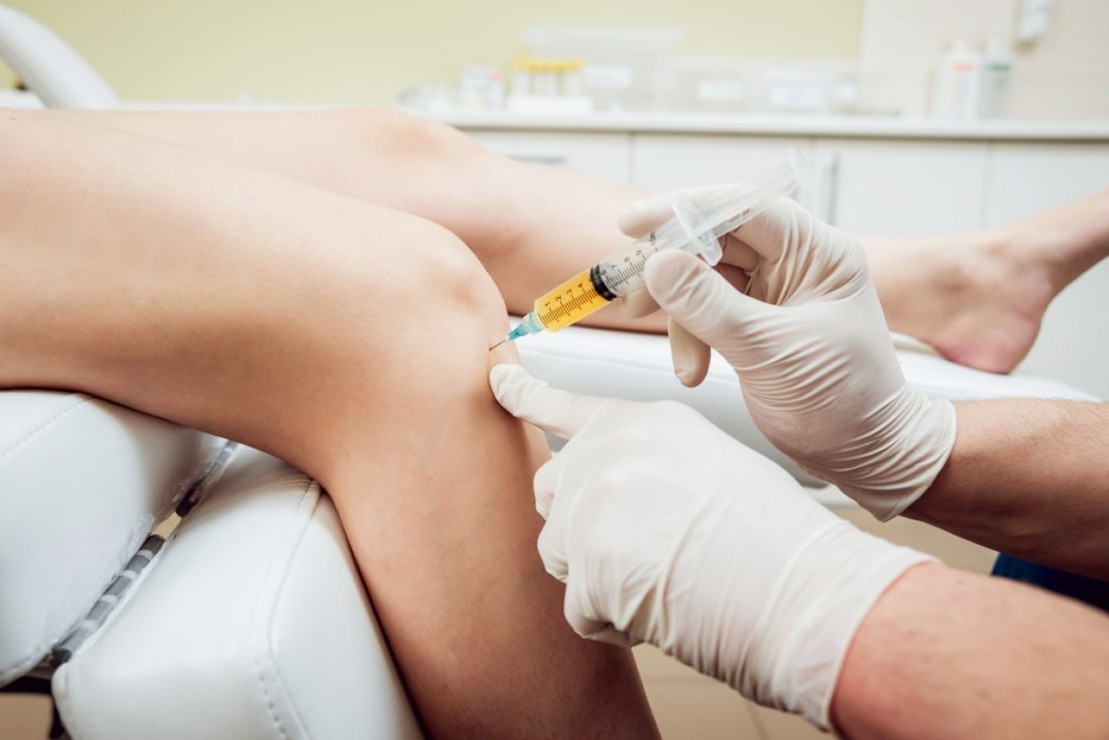Around 2% of the population in the United States is reportedly suffering from chronic wounds amounting to over $25 billion cost to the healthcare system each year. [1] The majority of conventional wound care treatments have failed to achieve wound healing within the desired timeframe. As a result, several novel treatment procedures are being studied by wound care specialists, podiatrists, and other researchers for the management of chronic wounds. Platelet-rich plasma therapy is a recent advancement in wound care that has shown some promising results in improving wound healing.
What is Platelet-Rich Plasma Therapy?
Platelet-rich plasma refers to an autologous concentration of human platelets in a small volume of plasma. It is a relatively recent therapeutic agent and was developed theoretically in the 1990s. [2] Currently, it is increasingly being used in the treatment of chronic skin wounds in conjunction with other wound care treatment modalities. Platelet-rich plasma (PRP) has a high concentration of platelets and growth factors that can help with wound healing.
Autologous PRP development involves obtaining a blood sample from the patient and later centrifuging the sample to separate plasma from red blood cells. The blood sample is mixed with an anticoagulant such as citrate dextrose before centrifugation and is kept sterile to avoid contamination. The centrifugation process has now been simplified and can be carried out either in an office or operating room. [3] It should be kept in mind that not all centrifugation devices can achieve a similar concentration of platelets in the plasma which accounts for the criticism directed at PRP’s efficacy. Therefore, wound care specialists and podiatrists need to ensure that an FDA-approved device is used for the preparation of autologous PRP.
The growth factors present in platelets can be released by either addition of calcium or thrombin or using other methods that disrupt the platelet’s membrane. The final concentrate can then be applied to the wound bed with dressings or can be applied locally as a gel. For PRP to produce clinically proven results, the concentration of platelets should be at least 1 million/microliter. [4]
It is recommended that an autologous platelet-rich plasma is used as it is safe from transmissible diseases, and is better tolerated by the patients. [5]
How Platelet-Rich Plasma Therapy (PRP) Improves Wound Healing?
Platelet-rich plasma therapy (PRP) acts by the release of growth factors from platelets via degranulation of alpha-granules. [6] The alpha-granules are a rich source of growth factors like PDGF (platelet-derived growth factor), EGF (epithelial growth factors), VEGF (vascular endothelial growth factor) which play a critical role in wound healing process. These growth factors bind to transmembrane receptors on the external surface of epidermal cells, fibroblasts, osteoblasts, and endothelial cells. This triggers the wound healing process through an increased proliferation of fibroblasts, extracellular matrix formation, and collagen synthesis.
PRP also has the potential to limit the inflammation at the wound site which improves wound healing. Macrophages are also recruited to the wound site which through their bactericidal activity, decreases wound bioburden. PRP has been documented to be effective against E.coli, Staph aureus, and Candida albicans. Additionally, PRP enhances angiogenesis and epithelialization in chronic, non-healing wounds. [7]
Clinical Application Of Platelet-Rich Plasma Therapy In Wound Care
The application of platelet-rich plasma therapy has been studied for chronic wounds of various etiologies. Platelet-rich plasma therapy can be clinically used in the treatment of the following types of wounds:
- Diabetic Ulcers: Studies carried out to observe the application of platelet-rich plasma therapy in lower-extremity diabetic ulcers found significantly improved healing outcomes in patients treated with autologous PRP therapy. The wound healing time was also reduced with the use of platelet-rich plasma (PRP) therapy. However, compared to other methods, there was not enough evidence to determine the superiority of PRP with regards to other wound care outcomes. [8]
- Chronic Ulcers: Non-healing ulcers of mixed etiologies have been treated with autologous platelet-rich plasma therapy in several experimental studies. All of these studies have demonstrated a significant reduction in the wound size with minimal side effects. There was also a significant reduction in pain and inflammation with the use of autologous PRP therapy. [9]
References
- Brem H, Stojadinovic O, Diegelmann RF, Entero H, Lee B, Pastar I, Golinko M, Rosenberg H, Tomic-Canic M. Molecular markers in patients with chronic wounds to guide surgical debridement. Molecular medicine. 2007 Jan;13(1):30-9.
- Anitua E, Andia I, Ardanza B, Nurden P, Nurden AT. Autologous platelets as a source of proteins for healing and tissue regeneration. Thrombosis and haemostasis. 2004;91(01):4-15.
- Martinez‐Zapata MJ, Martí‐Carvajal AJ, Sola I, Expósito JA, Bolibar I, Rodriguez L, Garcia J, Zaror C. Autologous platelet‐rich plasma for treating chronic wounds. Cochrane Database of Systematic Reviews. 2016(5).
- Marx RE. Platelet-rich plasma: evidence to support its use. Journal of Oral and Maxillofacial Surgery 2004;62(4):489-96.
- Mehta S, Watson JT. Platelet rich concentrate: basic science and current clinical applications. J Orthop Trauma. 2008;22(6):432–438.
- Knighton DR, Doucette M, Fiegel VD, Ciresi K, Butler EL, Austin L. The use of platelet-derived wound healing formula in human clinical trials. Prog Clin Biol Res. 1988;266:319–329.
- Lacci KM, Dardik A. Platelet-rich plasma: support for its use in wound healing. The Yale journal of biology and medicine. 2010 Mar;83(1):1.
- Qu W, Wang Z, Hunt C, Morrow AS, Urtecho M, Amin M, Shah S, Hasan B, Abd-Rabu R, Ashmore Z, Kubrova E. Platelet-Rich Plasma for Wound Care in the Medicare Population.
- Suthar, M.; Gupta, S.; Bukhari, S.; Ponemone, V. Treatment of chronic non-healing ulcers using autologous platelet-rich plasma: A case series. J. Biomed. Sci. 2017, 24, 16.



.webp)

.avif)